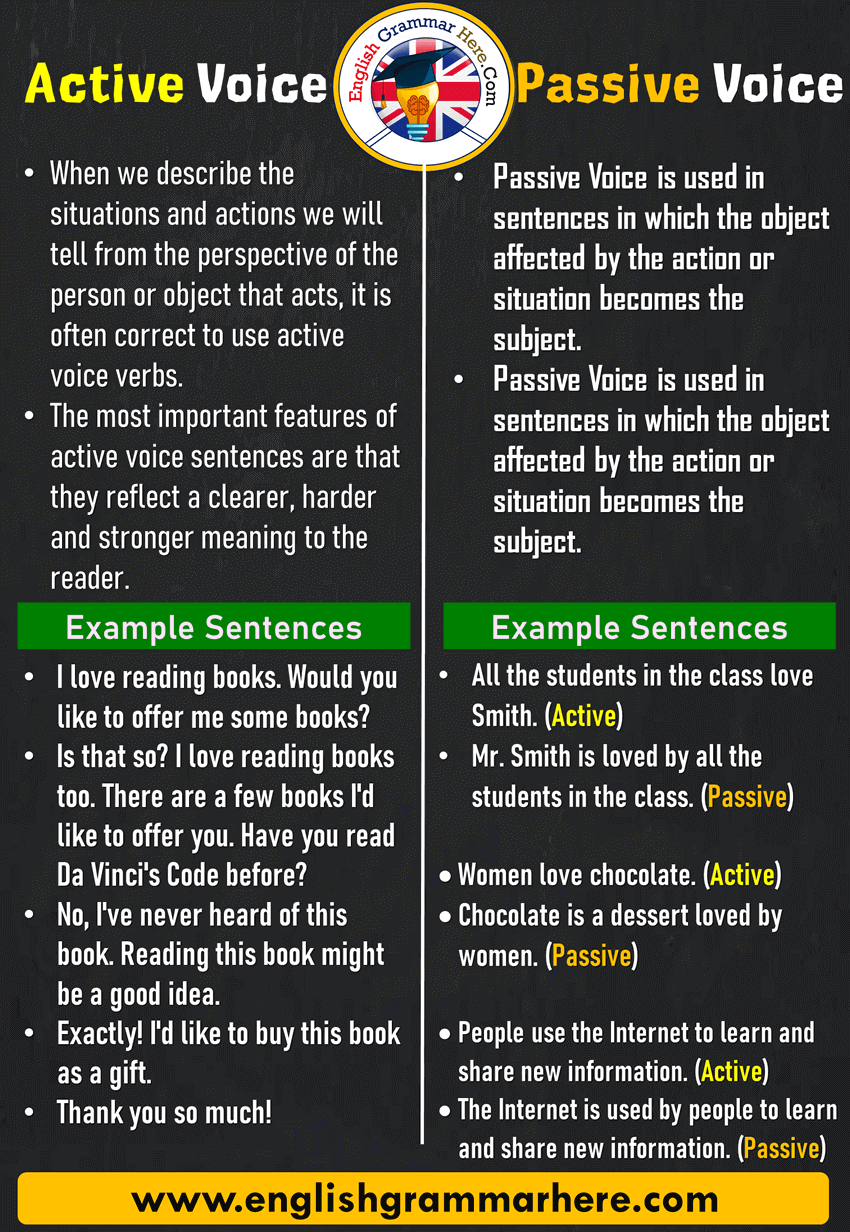Active and passive voice are two different ways in which a sentence can be structured. Understanding the difference between these two forms of grammar is essential for effective writing. By knowing when to use each, you can enhance the clarity and impact of your writing.
Active voice places the emphasis on the subject of the sentence performing the action, while passive voice shifts the focus to the object or recipient of the action. Both forms have their own uses and benefits, depending on the context of the sentence.
Active and Passive Voice Grammar
Active voice is often preferred in writing as it is more direct, concise, and engaging. In active voice sentences, the subject is performing the action, making the sentence clearer and more dynamic. For example, “The teacher (subject) explained (action) the lesson to the students.” In this sentence, the subject, “the teacher,” is clearly identified as the one performing the action of explaining the lesson.
On the other hand, passive voice is used when the focus is on the recipient of the action or when the doer of the action is unknown or less important. Passive voice sentences often use the auxiliary verb “to be” along with the past participle of the main verb. For example, “The lesson (object) was explained (action) to the students by the teacher.” In this sentence, the focus is on the lesson being explained to the students, rather than on the teacher who is performing the action.
While passive voice can sometimes be necessary or appropriate, it is generally less engaging and can make sentences more wordy and less direct. It is important to use passive voice sparingly and only when it serves a specific purpose, such as emphasizing the recipient of the action or when the doer of the action is unknown or irrelevant.
Overall, understanding the differences between active and passive voice grammar is crucial for effective communication. By being able to recognize and use both forms of grammar appropriately, you can enhance the clarity and impact of your writing. Practice using active voice in most cases for direct and engaging sentences, while using passive voice selectively when necessary for emphasis or clarity.
So, next time you sit down to write, consider the impact of your choice between active and passive voice. By mastering both forms of grammar, you can take your writing to the next level and effectively communicate your message to your audience.
